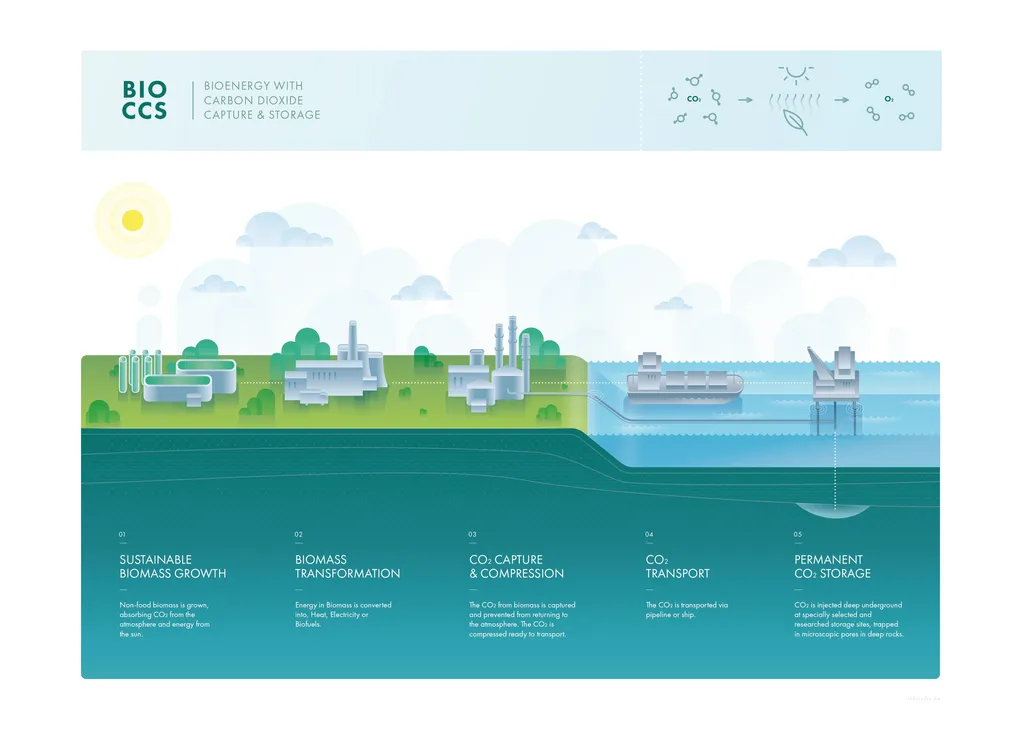In the quest to mitigate carbon emissions, researchers are continually seeking more efficient and cost-effective methods for carbon capture. A recent study published in the journal *Carbon Capture Science and Technology* offers new insights into the thermodynamic properties of CO2 absorption using aqueous blends of 2-amino-2-methyl-1-propanol (AMP) and piperazine (PZ). This research, led by Diego Morlando from the Department of Chemical Engineering at the Norwegian University of Science and Technology, could have significant implications for the energy sector, particularly in post-combustion carbon capture technologies.
The study provides new thermodynamic data for CO2 absorption in aqueous AMP/PZ solutions, including the CESAR1 blend, a solvent known for its potential in carbon capture processes. Morlando and his team measured CO2 solubility at temperatures ranging from 40 to 150 °C, extending the range of CO2 loading and temperature previously investigated. This data is crucial for understanding the behavior of these solvents under various operating conditions.
One of the key findings of the study is the heat of absorption of CO2 in aqueous AMP and AMP/PZ solutions, measured from 40 to 80 °C. The results indicate that while the heat of absorption remains constant with temperature, it is significantly affected by the AMP/PZ concentration ratio. This insight could help optimize the design of carbon capture systems to improve energy efficiency.
“The heat of absorption is a critical parameter in the design of carbon capture processes,” Morlando explained. “Understanding how it varies with the concentration ratio of AMP and PZ can lead to more efficient and cost-effective capture technologies.”
The study also measured the solubility of N2O in the CESAR1 solvent, which decreases as a function of temperature and CO2 loading due to the salting-out effect. This information is valuable for developing accurate thermodynamic models that can predict the behavior of these solvents under different conditions.
Furthermore, the research investigated the effect of CO2, AMP, and PZ concentration on the pH of the solution. Liquid speciation for the CESAR1 blend and an aqueous solution of 1.5 M AMP + 0.75 M PZ was measured at CO2 loading from 0 to 0.80 molCO2/molamine. The results showed that at relatively low CO2 loading, the CO2 dissolved exists mainly as PZ-carbamate. However, at higher CO2 loading, bicarbonate/carbonate and PZ-dicarbamate become the major products. The AMP carbamate was found not to be a major product across the entire range of CO2 concentration investigated.
“This research broadens the existing dataset and supports the development of rigorous thermodynamic models essential for evaluating energy requirements and environmental impacts of CO₂ capture using CESAR1 technology,” Morlando added.
The findings of this study could have significant commercial impacts for the energy sector. By providing a deeper understanding of the thermodynamic properties of CO2 absorption in AMP/PZ solutions, the research paves the way for the development of more efficient and cost-effective carbon capture technologies. This, in turn, could help reduce the environmental footprint of power plants and other industrial facilities, contributing to global efforts to combat climate change.
As the energy sector continues to evolve, the insights gained from this research will be invaluable in shaping future developments in post-combustion carbon capture. By optimizing the design and operation of carbon capture systems, we can move closer to achieving a more sustainable and low-carbon future.

